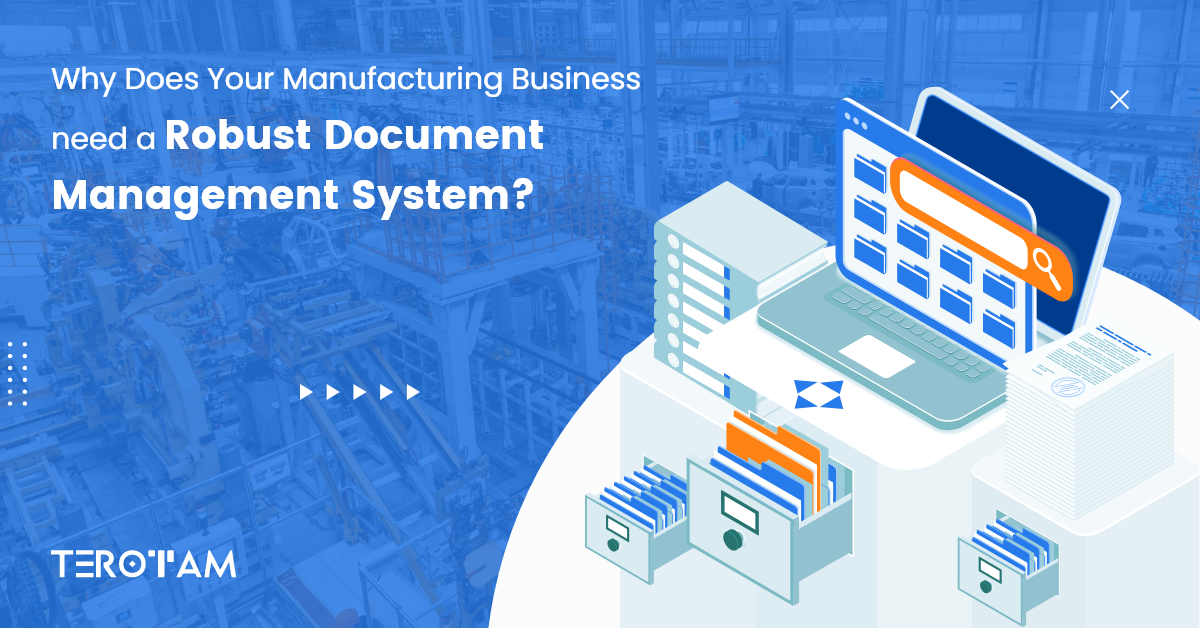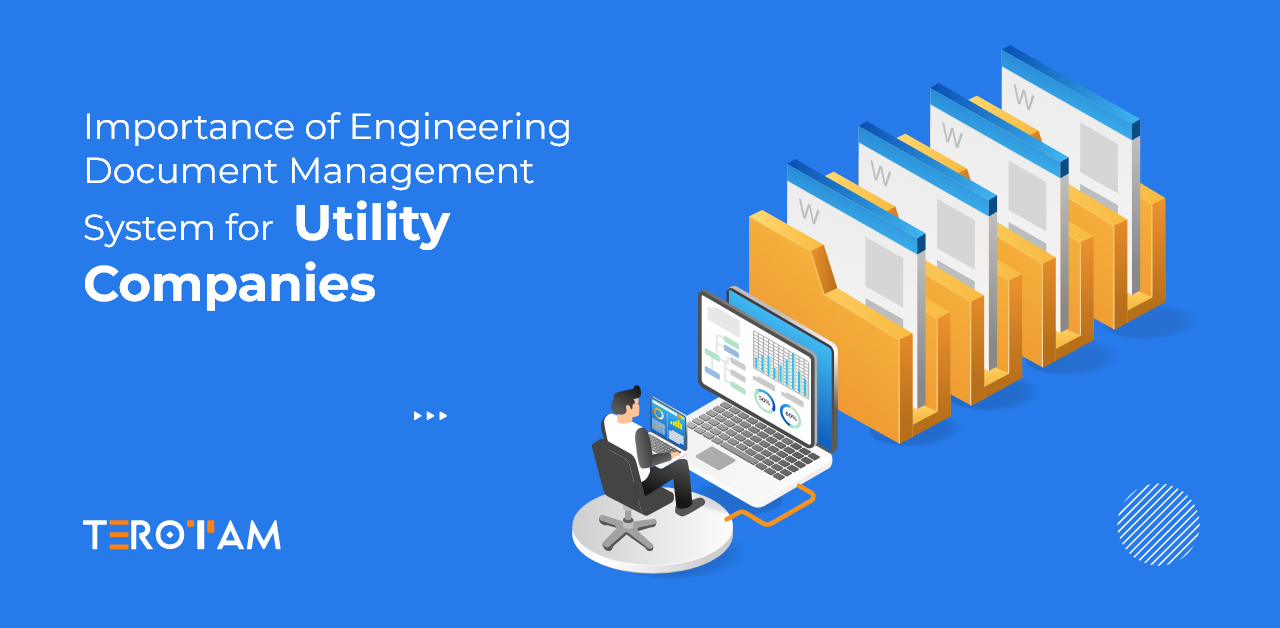We are experiencing the Informational era in recent times. As the Internet says, We produce 2.5 quintillion bytes of data per day. According to information on the Internet, most of that data has been created in the previous two years alone, and the rate at which it is produced shows no signs of stopping. Imagine this volume of information now as files or papers. It would be possible for the stack of papers to travel to and from the sun. Enterprises must therefore know the advantages of the document management system. In this race of documentation and its complexity, the manufacturing sector is nowhere behind other industries.
Complex manufacturers have a ton of quality documentation to finish each week. It can be challenging to keep track of the records needed for process flow, compliance, and auditing requirements without a strong document management system in place. An electronic document management system is nearly always necessary for successful manufacturing due to data arriving from many sources and the requirement to distribute documents across the organization.
Here in this article, we are enlightening the need and benefits of Document Management Systems in the Manufacturing industry. Let’s begin with a quick look at What a Document Management System is.
What is a Document Management System?
A software program that stores and manages electronic documents is known as a Document management system. Modern document management systems contain a range of features, including integrations, co-editing capacities, and social tools, that expedite the entire process of storing and sharing knowledge. These systems are created with utility in mind.
Systems for managing documents come in a variety of sizes and shapes. Some programs are stand-alone, which means they were made just to help users manage their files and papers. Others are a part of a large collection of other tools for conducting business, such as calendars, messaging, and case tracking. These suites, often known as social business software, social intranet software, or collaboration tools, are perfect for companies seeking a single solution to handle daily operations.
12 Key Benefits of Document Management System for the Manufacturing Industry
It may seem intimidating to attempt to digitize vast quantities of paper documents. But by choosing to invest in an electronic document management solution, manufacturers provide themselves the groundwork to help scale business-critical procedures and streamline workflows. Here are the main advantages of establishing an electronic document management system for your manufacturing organization, in addition to increasing business productivity.
1. Central Document Repository
A single source of information removes lost documents and considerably decreases the possibility of inaccuracy. A document management system makes it simple to store and retrieve files while streamlining the document control process. An automated electronic backup helps manufacturers avoid document loss and ensures the security of important data.
2. Less Storage Space
The cost of storing paper documents is rising along with the price of commercial real estate. Any business would benefit from a software-based DMS that could eliminate the need for file cabinets, boxes, and storage bins, freeing up valuable office space. Hard copies of documents can frequently be held in less expensive places, such as an offsite warehouse or vault.
3. Improved Security
For enterprises of any size to protect sensitive data, document security is essential. DMS offers improved control over critical documents, and access to documents can be restricted for various groups or individuals at the folder level. A DMS also creates an audit trail of who has accessed a document, when, and possible modifications. Managed papers can be labeled to provide automated notifications and are very traceable.
4. Workflow Improvement
In the course of its lifecycle, a document must pass from one person to another in a department, from one firm’s department to another, and from that company to other organizations. Before serving its goal, the document must pass through various steps, including development, review, approval, and dispatch. On someone’s desk, that document might occasionally disappear.
DMS systems give you the ability to trace a document’s exact location in its lifecycle, as well as all changes and additions that have been made to it. You can also see who has authorized the document (or not), as well as who has made changes. DMS also has a function called document classification that enables you to classify and better organize your work.

5. Enhanced Organization and Version Control
It can be challenging to tell if the document you’re looking at is the most recent version, even if you’ve switched to digital. A poll found that 33% of employees have trouble using version control. It is obvious that this may result in confusion and disarray. By keeping track of revisions and offering a documented history, an effective document management system avoids these hassles. You’ll always have access to the most recent version and be able to see all the changes.
6. Quick access to Documents
Quick access to everything is becoming increasingly important in today’s professional environment. The simplest path to falling behind is to disregard this requirement. Finding information quickly can be quite challenging when documents are stacked high in filing cabinets. You and your workers may rapidly access any papers you might need, wherever you are, which is one of the key advantages of a document management system.
7. Collaboration Breeze
A cloud-based DMS will facilitate collaboration on projects and documents more effectively than a conventional document management solution, regardless of whether you operate from an office or from home. Any document may be quickly uploaded to a DMS database from a variety of sources, including email, Dropbox, Google Docs, Microsoft Office, Android, and iOS devices. Paper documents can also be scanned and immediately entered. Additionally, email correspondence pertaining to a shared document can be tracked and examined with integrated email capture.
8. Effortless Document Sharing
With the aid of document management software, you may share documents with everyone within the system as well as upload, store, and search for them. There is no need to send emails more than once to distribute a file to avoid misunderstandings caused by various copies and versions. A document’s access can also be tailored to your needs and circumstances, and you can transmit the file as an attachment or as a ticket URL with an expiration date. You will be able to access your papers from any location, at any time.
9. Simplified Regulatory Compliance
Different compliance rules apply to different industries, and following them is not always simple. That kind of non-compliance not only puts you at risk for legal troubles and maybe costly fines, but it can also harm your reputation and eventually hurt your bottom line. A document management system can significantly facilitate compliance with tax rules, OSHA standards, and other federal or state laws. You’ll be able to store files with ease and automatically organize, safeguard, and store them in accordance with standards.
10. Streamlined Document Retrieval
Finding and obtaining documentation can take a lot of time, and as we all know, time is money. An average office worker spends 30 to 40 percent of their workday looking for printed documents. The budget, productivity, and capacity for expansion of a business are all hampered by these excessive document management time and costs. A practical solution that can help you save time is a document management system. A DMS may be able to retrieve files by a word or phrase found in a document, depending on the solution used. DMS also provides the option of remote document access. Documents can be accessed anywhere, at any time, as long as there is an internet connection.
11. Integrates with Key Business Apps and System
There are more software programs and applications available now than you can count. And a lot of them, especially those that are essential to a manufacturing industry, would be expensive and challenging to replace. However, an effective document management solution can seamlessly interact with legacy systems, preventing interruption. Accounts payable, logistics, marketing, and any other department may easily access and send documents, and many of their operations can be automated.
12. Helps You Go Green
Last, but certainly not least, the advantage of a document management system is that it aids businesses in going green. A document management system can help you save a lot of paper, and by extension, a lot of trees.
It’s Time to Decide on the Best Document Management System for your Manufacturing Business…!!
The inefficiencies caused by managing paper papers, or even just badly managed digital documents, can cost your company time, money, and aggravation. The only approach to stop these problems in their tracks is to spend money on a high-quality document management solution that fits your specific requirements. Finding that answer, though, is a different matter.
TeroTAM Document Management Software provides solutions that enable you to replace paper documents, such as accounts payable invoices, with simple and integrated digital formats, all with the aid of best-in-class optical character recognition (OCR) technology. Lowering data entry errors, establishing more effective processes, and many other things will assist your company in saving time and money. Reach us at contact@terotam.com to Get more insights on our DMS solution or schedule an appointment now.









